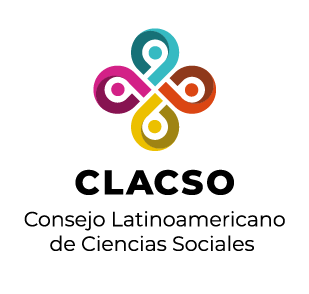Red de Bibliotecas Virtuales de Ciencias Sociales en
América Latina y el Caribe

Por favor, use este identificador para citar o enlazar este ítem:
https://biblioteca-repositorio.clacso.edu.ar/handle/CLACSO/125125| Título : | The imaginary of peace: student and teacher collective construction Los imaginarios de paz: construcción colectiva de estudiantes y maestros |
| Palabras clave : | convivencia;estudiante de secundaria;imaginario;paz;coexistence;high school student;imaginary;peace |
| Editorial : | Universidad Distrital Francisco José de Caldas |
| Descripción : | Starting from the question about peace imaginaries between basic secondary students and teachers , here is presented the result of focus group interviews related to the concept and the peace process. The unit of analysis involves young and teacher groups (eighteen students distributed on three six person groups and nine teachers distributed on two groups). The naturalist and interpretative qualitative focus and descriptive-interpretative analysis. It’s been concluded that there is an invisible link between coexistence and peace, students are oriented to a peace concept as longed-for status, experience in harmony, freedom and justice, meanwhile, teachers precise it as a construction and social responsibility process and they place the dialogue as a dimension of it. On respect to the peace process, teachers highlight the laudable effort of Colombian state and the Integral system of truth, justice, repair and not repeating regulation. Partiendo de la pregunta sobre los imaginarios de paz en estudiantes y maestros de educación básica secundaria, se presenta aquí el resultado de entrevistas a grupos focales relacionada con el concepto y el proceso de paz. La unidad de análisis involucra grupos de jóvenes y maestros (dieciocho estudiantes distribuidos en tres grupos de seis y nueve maestros distribuidos en dos grupos). El enfoque cualitativo naturalista e interpretativo y el análisis descriptivo-interpretativo. Se concluyó que existe un vínculo indeleble entre convivencia y paz, los estudiantes se orientan a un concepto de paz como estado anhelado, vivencia en armonía, libertad y justicia, mientras que los maestros lo precisan como un proceso de construcción y responsabilidad social y sitúan el diálogo como dimensión de la misma. Respecto al proceso de paz, los maestros resaltan el esfuerzo loable del Estado colombiano y la reglamentación del Sistema Integral de Verdad, Justicia, Reparación y No Repetición. |
| URI : | http://biblioteca-repositorio.clacso.edu.ar/handle/CLACSO/125125 |
| Otros identificadores : | https://revistas.udistrital.edu.co/index.php/cpaz/article/view/13957 10.14483/2422278X.13957 |
| Aparece en las colecciones: | Instituto para la pedagogía, la paz y el conflicto urbano - IPAZUD/UDISTRITAL - Cosecha |
Ficheros en este ítem:
No hay ficheros asociados a este ítem.
Los ítems de DSpace están protegidos por copyright, con todos los derechos reservados, a menos que se indique lo contrario.